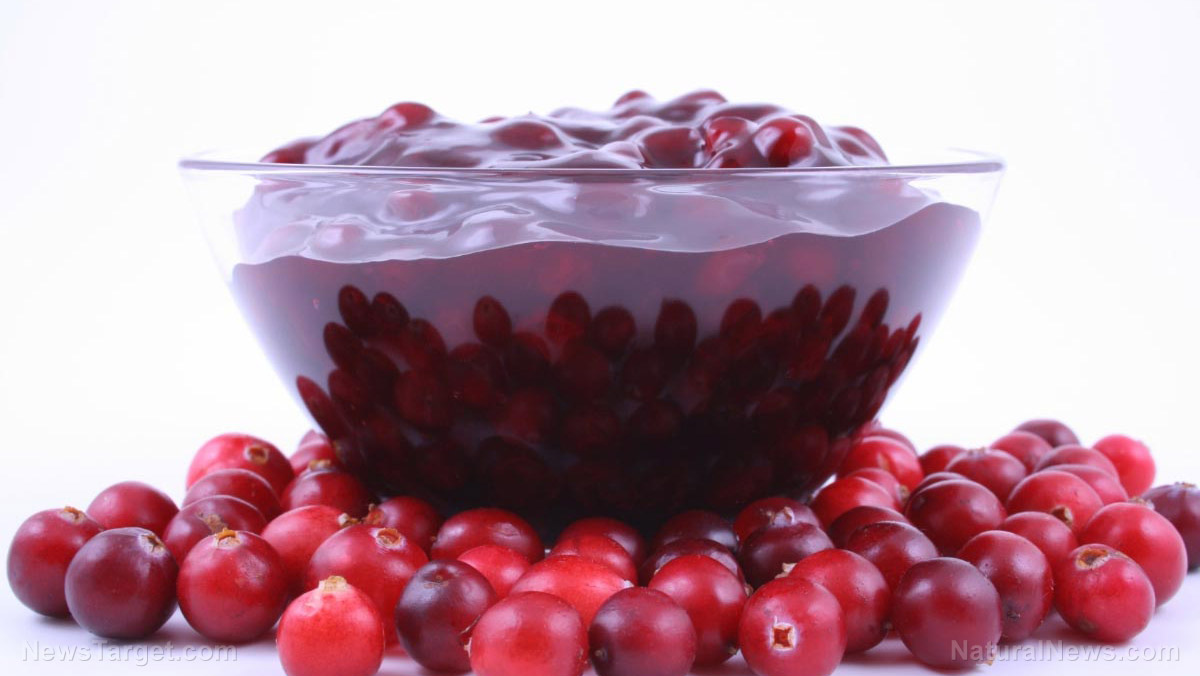
Advertisement
Most people associate cranberries with Thanksgiving, but there are lots of good reasons to eat cranberries year-round. Perfect as a snack or a main dish, cranberries are a nutrient powerhouse. With just 50 calories and four grams of sugar per cup, cranberries are low in calories and sugar, especially when compared to other fruits.
Cranberries have also been linked to a number of impressive health benefits as they can help do the following:
Reduce inflammation
Cranberries are packed with antioxidants. In fact, when it comes to fruits, they rank just below blueberries, the so-called king of antioxidants, in antioxidant potency. Those antioxidants help reduce chronic inflammation, which contributes to the development of several chronic diseases, including heart disease, diabetes and cancer.
Previous studies have shown that people who consume cranberries often have lower levels of C-reactive protein than those who don’t eat cranberries. C-reactive protein is a blood marker of inflammation, which has been shown to trigger premature aging and cognitive decline.
Protect against free radical damage
Cranberries contain bioactive compounds called phytochemicals. Many phytochemicals act as antioxidants. Aside from reducing inflammation, antioxidants also protect healthy cells from free radicals. These reactive molecules are naturally generated by our bodies. But at very high levels, they can damage healthy cells, fats, proteins and even DNA.
Therefore, it’s important to eat foods rich in phytochemicals, such as cranberries.
Treat and prevent urinary tract infections
One of the best-known benefits of cranberries is their use in promoting urinary tract health. For decades, many people used cranberries as a remedy for bacterial urinary tract infections (UTIs), which caused frequent and painful urination. Scientists first thought that cranberries worked by acidifying the urine, thus killing the bacteria causing the UTI. (Related: Prevent urinary tract infections naturally with this antioxidant-rich superfood.)
It wasn’t until the 1990s that scientists would determine that something in cranberries prevented bacteria from sticking to the lining of the bladder. That “something” was identified as proanthocyanidins.
Finally, in 2016, a landmark study found that drinking cranberry juice every day reduced symptomatic UTIs by nearly 40 percent in women with recurrent UTIs. The study’s findings suggest a reduction in the need for antibiotics when treating UTIs and highlight the role of cranberries as a natural treatment for UTIs.
Cranberry recipes
It’s best to buy fresh, raw cranberries when they are in season, which usually runs from mid-September to mid-November in North America. They can be refrigerated or frozen for later use, but it’s best to eat them fresh. The skins contain many of the beneficial properties of cranberries, so your best bet is to add them whole to oats or cereals or blend them into juices and smoothies.
You can also incorporate cranberries into both sweet and savory recipes.
Paleo cranberry sauce
Make your own delicious cranberry sauce with only five ingredients. It’s the easiest Thanksgiving side dish.
Ingredients for 2 1/2 cups of sauce:
- 4 cups cranberries, fresh or frozen
- 1 cup freshly squeezed orange juice
- 1/2 cup coconut sugar
- 1/2 teaspoon ground cinnamon
- Finely grated orange zest
Preparation:
- Add all the ingredients to a saucepan. Bring to a boil over medium-high heat, stirring constantly.
- Cook for 10-15 minutes or until most of the cranberries have popped.
- Remove from heat and let cool. Taste and add more sugar and/or cinnamon if needed.
- For a smoother sauce, puree the mixture. Pour into a clean, airtight jar and refrigerate.
Cranberry crumble bars
These cranberry crumble bars freeze well. Whip up a big batch on a free afternoon and pop them in the freezer so you’ll always have a tasty and healthy snack on hand.
Ingredients for the filling:
- 2 cups cranberries, fresh or frozen
- 6 Tablespoons sugar
- 1 1/2 Tablespoons rice flour or potato starch
- 2 teaspoons almond extract
- 1/4 teaspoon ground cinnamon
- Zest and juice of 1/2 orange
Ingredients for the crust:
- 2 eggs, whites only
- 1 1/2 cups whole-wheat flour
- 1 1/2 cups almond flour
- 1/2 cup sugar
- 4 Tablespoons cold, unsalted butter, cubed
- 1 1/2 teaspoons vanilla extract
- 1 teaspoon baking powder
- 1/4 teaspoon salt
- 1/4 teaspoon ground nutmeg
- Zest of 1/2 orange
Preparation:
- Preheat the oven to 375 F. Line a 9×13 baking pan with parchment paper. Set aside.
- Mix all the filling ingredients in a small bowl. Set aside.
- In another bowl, mix the flours, sugar, baking powder, salt, nutmeg and orange zest. Work butter into the mixture, pinching and rubbing the cubes with your hands until the mixture is crumbly.
- In a small bowl, beat the egg whites and vanilla extract and pour this into the flour mixture. Set aside half a cup of this mixture.
- Press the remaining mixture into the prepared baking pan to form a bottom crust.
- Pour the cranberry mixture into the crust. Sprinkle the reserved crust mixture on top.
- Bake for 40 minutes or until the top has lightly browned. Let cool before slicing.
Cranberries are an antioxidant-rich fruit capable of reducing inflammation, fighting free radicals and treating UTIs. To take advantage of their benefits, incorporate cranberries into your favorite recipes.
Watch this video about treating and preventing UTI with cranberries.
This video is from the Natural News channel on Brighteon.com.
More related stories:
Cranberries prevent cancer and many other chronic diseases.
Cranberries offer an excellent way to boost your health, say nutrition researchers.
Cranberries are a great addition to the diets of pregnant women, thanks to antibacterial properties.
Sources include:
Advertisements







